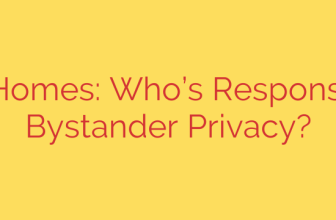
Amazon’s $2.5 Billion Prime Settlement: A Deep Dive into Deceptive Design and Consumer Rights
In a landmark decision with far-reaching implications for the e-commerce and subscription industry, Amazon has agreed to a massive $2.5 billion settlement over allegations of deceptive practices related to its Prime membership program. This case shines a spotlight on the controversial use of “dark patterns” in digital design and marks a significant victory for consumer protection.
The core of the issue wasn’t the value of Amazon Prime itself, but rather how the company allegedly trapped customers in subscriptions they no longer wanted. Regulators and consumer groups argued that Amazon’s platform was intentionally designed to make cancelling a Prime membership a confusing and frustrating ordeal.
What Was the Amazon Prime Lawsuit About?
The central claim was that Amazon utilized a deliberately complicated cancellation process to retain subscribers. Users who wished to end their Prime membership were allegedly confronted with a maze of confusing navigation, multiple pages of retention offers, and ambiguously worded buttons designed to steer them away from their goal.
This multi-step process, sometimes referred to internally as the “Iliad Flow,” was accused of being a classic example of a “dark pattern”—a user interface design choice made to trick users into doing things they might not want to do. Instead of a straightforward “cancel subscription” button, customers were often funneled through a series of prompts that required them to decline various offers and confirm their decision multiple times.
Key allegations against Amazon included:
- Obscuring the cancellation path: Making it difficult for users to even find the initial option to cancel their membership.
- Misleading language and visuals: Using confusing button labels and highlighting options that would keep the subscription active.
- Creating unnecessary friction: Forcing users to click through several pages and warnings before they could finally confirm the cancellation.
These practices led to intervention from regulatory bodies, including the Federal Trade Commission (FTC) and the European Commission, which argued that such designs exploited consumers and violated their rights.
The Impact of the $2.5 Billion Settlement
The $2.5 billion figure represents one of the largest settlements of its kind, sending a powerful message to companies that rely on subscription-based revenue. It underscores a growing intolerance for manipulative design practices and reinforces the principle that consumers must have a clear and simple way to end a service they are paying for.
While the full details of the fund’s distribution are still emerging, it is expected to cover significant fines and provide compensation for affected Prime members. More importantly, the settlement has forced tangible change. In response to the regulatory pressure, Amazon has already simplified its Prime cancellation process in several regions, reducing it to a much more straightforward, two-click procedure.
How to Protect Yourself from Deceptive Subscriptions
This case serves as a critical reminder for all consumers to be vigilant about their online subscriptions. Deceptive design isn’t unique to one company, and many services make it easy to sign up but difficult to leave.
Here are some actionable tips to protect yourself:
- Regularly Audit Your Subscriptions: Once a quarter, review your bank and credit card statements for recurring charges. It’s easy to forget about a free trial that converted into a paid subscription.
- Read Before You Click: Before starting a “free trial,” understand the cancellation terms. Note the date the trial ends in your calendar so you can make an informed decision before you are charged.
- Look for a Clear Exit: When considering a new subscription service, take a moment to see how easy it is to cancel. If the cancellation instructions are buried deep in a help-desk article or seem intentionally vague, consider it a red flag.
- Document Your Cancellation Attempts: If you try to cancel a service and find it difficult, take screenshots of the process. This can serve as valuable evidence if you need to dispute a charge with your bank.
The Amazon Prime settlement is more than just a financial penalty; it’s a turning point in the fight for transparent and fair digital commerce. It empowers consumers and puts all businesses on notice: prioritizing user experience must include providing a clear, simple, and honest way to say goodbye.
Source: https://www.bleepingcomputer.com/news/technology/amazon-pays-25-billion-to-settle-prime-memberships-lawsuit/








